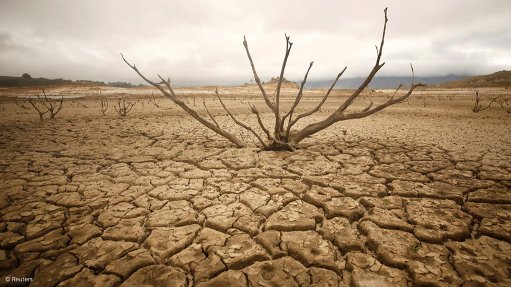
Climate change is becoming a more urgent economic, social and existential threat to countries and their people
Photo by: Reuters
Unless urgent climate and development action is taken globally and nationally, just over 143-million people could be forced to move within their own countries to escape the slow-onset impacts of climate change by 2050, a new World Bank report 'Groundswell - Preparing for Internal Climate Migration' finds.
World Bank CEO Kristalina Georgieva on Monday stated that climate change is becoming a more urgent economic, social and existential threat to countries and their people and the worsening impacts of this can be seen in three densely populated regions in the world - sub-Saharan Africa, South Asia and Latin America.
These three regions, which together represent 55% of the developing world's population, could see over 140-million people move within their countries' borders by 2050, creating a looming human crisis and threatening the development process, the report states.
With worsening climate change, people will migrate from less viable areas with lower water availability and crop productivity and from areas affected by a rising sea level and storm surges, with the poorest and most climate-vulnerable areas to be hit the hardest.
These trends, the report highlights, alongside the emergence of "hotspots" of climate in- and out-migration, will have major implications for climate-sensitive sectors and for the adequacy of infrastructure and social support systems.
The World Bank notes that internal climate migration will likely rise through 2050 and then accelerate, unless there are significant cuts in greenhouse-gas (GHG) emissions and robust development action.
Concrete climate and development action, including global efforts to cut GHG emissions and robust development planning at the country level, could, however, assist in reducing the worst-case scenario of over 140-million people to 100-million people.
Where the limits of local adaptation are anticipated, well-planned migration to more viable areas can be a successful strategy, the report states.
A strong enabling environment for migration, however, needs to be in place supported by direct incentives, such as skills training and job creation programmes, for people to move to areas of low risk and greater opportunity.
Strategies supporting internal migration need to safeguard not only the resilience of those moving, but also of those in sending and receiving communities, the World Bank states.
The report, released on Monday, is the first and most comprehensive study of its kind, the World Bank stated, noting that the report is aimed at focusing on the nexus between slow-onset climate change impacts, internal migration patterns and development in these three developing regions of the world.